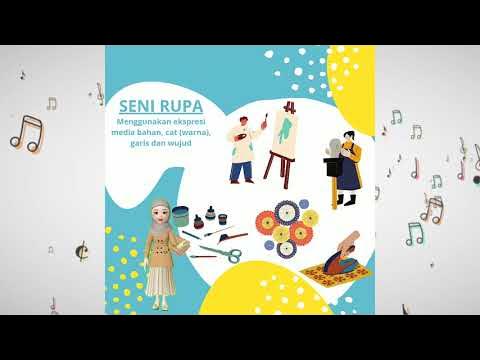Art Lessons for Children with Disabilities: Physical Disabilities
Summary
TLDRThis video explores the transformative power of art for children with physical disabilities, highlighting its role in fostering family bonding, storytelling, and self-expression. It emphasizes the importance of using tactile and visual methods, such as modeling clay and textured paint, to accommodate children with fine motor, visual, and perceptual impairments. The video also provides strategies to engage other senses like touch, smell, and sound, ensuring that every child can participate and express themselves. It underscores the positive impact of accessible art materials both at home and school, offering a way for children to interact with their peers and overcome challenges.
Takeaways
- 😀 Art can serve as a catalyst for family bonding and storytelling, especially for children with physical disabilities.
- 😀 Children with physical disabilities may face challenges with fine motor skills, requiring the use of tactile media like modeling clay or large grasp tools.
- 😀 Using tactile media like free-form paint or modeling clay allows children with physical disabilities to express themselves alongside typically developing children.
- 😀 Children with physical disabilities may exhibit visual and perceptual impairments, making it important to provide both visual and tactile models before activities.
- 😀 To help children with poor vision or blindness, engaging their other senses, such as tactile, olfactory, and auditory, is essential.
- 😀 Music, scented materials like Play-Doh, and coarser sand mixed with temper paint can be used to engage children with visual impairments.
- 😀 Certain art materials can be more accessible and useful for children with physical disabilities, facilitating their participation in art activities.
- 😀 It’s important to consider what materials to avoid when designing art activities for children with physical disabilities to ensure inclusivity.
- 😀 Art plays a significant role in enhancing social interaction and communication for children with disabilities, both at home and in school.
- 😀 By adapting art activities to suit the needs of children with disabilities, educators and families can create more inclusive environments for self-expression.
Q & A
What role does art play in the life of children with physical disabilities?
-Art serves as a catalyst for family bonding and storytelling, helping children with physical disabilities express themselves and connect with others in various aspects of their lives.
What challenges do children with physical disabilities face when engaging with art?
-Children with physical disabilities may have trouble with fine motor skills, which can make tasks like manipulating art materials more difficult.
What strategies can be used to help children with physical disabilities engage in art?
-Using tactile media like modeling clay, freeform paint, and large grasp tools can help accommodate these children and allow them to work alongside typically developing peers.
Why is it important to use tactile media for children with physical disabilities?
-Tactile media help engage the senses and improve interaction with art, especially for children who struggle with fine motor skills.
How can art materials be made more accessible for children with physical disabilities?
-To make art materials accessible, use items that are easier to manipulate, such as large grasp tools or sensory-based materials like textured paints or clay.
What are the visual and perceptual challenges faced by children with physical disabilities?
-Some children with physical disabilities may also have visual impairments or blindness, which can limit their ability to fully engage with traditional art materials.
How can art activities be adapted for children with poor vision or blindness?
-For children with poor vision or blindness, it’s important to use a combination of visual and tactile models and to engage their other senses, such as sound and smell. This can be achieved through music, scented Play-Doh, or textured paint.
What is the significance of sensory engagement in art for children with disabilities?
-Sensory engagement helps children with disabilities connect with their art experiences in ways that are not limited by visual or motor challenges. Incorporating scent, sound, and tactile sensations allows them to experience art through multiple senses.
What specific art materials are suggested for children with physical disabilities?
-Art materials that are useful and accessible for children with physical disabilities include tactile tools, modeling clay, freeform paint, and large grasp tools, as well as scented or textured art supplies.
What should be avoided when providing art experiences for children with physical disabilities?
-When working with children with physical disabilities, it’s important to avoid art materials or tools that are too difficult to grasp or manipulate. Sensory overload or frustration can occur if the materials are not accessible.
Outlines

This section is available to paid users only. Please upgrade to access this part.
Upgrade NowMindmap

This section is available to paid users only. Please upgrade to access this part.
Upgrade NowKeywords

This section is available to paid users only. Please upgrade to access this part.
Upgrade NowHighlights

This section is available to paid users only. Please upgrade to access this part.
Upgrade NowTranscripts

This section is available to paid users only. Please upgrade to access this part.
Upgrade NowBrowse More Related Video
5.0 / 5 (0 votes)





